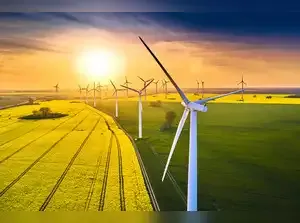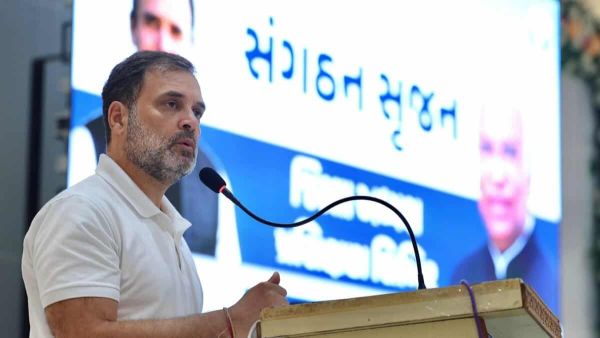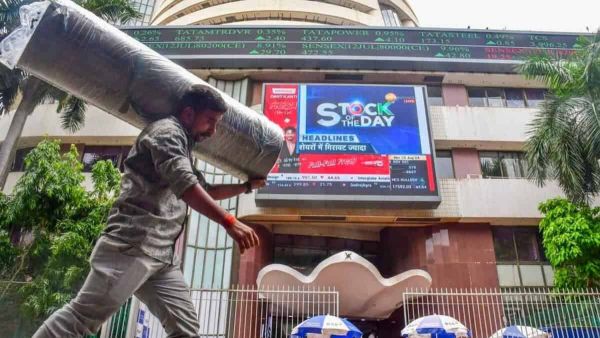Walk down the narrow lanes of Ludhiana at dawn and you can almost hear India’s economic pulse—furnaces roar, anvils ring, and small workshops trade grit for growth. The same rhythm beats in Morbi’s ceramic kilns, Tirupur’s humming knitwear mills, along with dozens of other hubs that together form a quiet giant. Globally, MSMEs are the economy’s beating heart—nine of every ten businesses, two-thirds of jobs, half of GDP. India mirrors that weight: the sector sustains more than 60% of the workforce, generates 29% of GDP (FY 2021-22) and draws nearly a quarter of industrial energy (FY 2020-21).
Yet these livelihood engines also shoulder punishing energy bills and a heavy carbon shadow: electricity alone can swallow 5-20 % of operating costs, and a dozen MSME subsectors release roughly 160 million tons of CO2 (Mt CO₂) each year —about seven per cent of India’s 2020 total. Since the late-2000s Bureau of Energy Efficiency (BEE) has been associated with the understanding that MSMEs are to be treated not as an afterthought but as a frontier where efficient kilns, compressors, and furnaces can slash costs, curb emissions, and protect jobs in one stroke.
Lighting the Spark
BEE’s first move was cartographic, not technological—map the hotspots. Thirty-five energy-intensive clusters, from Punjab’s foundries to Gujarat’s chemicals-and-dyes units, were surveyed. Embedded specialist teams ran audits, coached owners, and built the first evidence base. Twenty-one pilots turned diagnostics into precision castings, finer textiles, and measurable energy savings.
A later memorandum with the Ministry of MSME deepened the work, producing forensic studies across 55 clusters and 550 detailed project reports (DPR). Those blueprints now underpin decarbonisation frameworks at NITI Aayog and guide state action plans. The spark, in short, had caught.
Fixing the Finance
From 2011 to 2021 BEE, the World Bank, the United Nations Industrial Development Organization (UNIDO), and the Global Environment Facility rewired the economics of efficiency. A SIDBI-anchored revolving fund funnelled capital into bankable projects while 750 auditors, 1,100 bankers, and hundreds of vendors stitched the diagnostics-to-deployment pipeline.
Results spoke. The World Bank–BEE programme alone nudged more than 1,000-plus MSMEs, steering ₹332 crore into upgrades and lining up five times more for follow-on deals. Annual savings: 31.5 kilo ton oil equivalent (ktoe) - enough energy to light a mid-size city; lifetime climate benefit: 2.72 Mt CO₂ - about the emissions from 2.25 million average passenger cars per year. UNIDO-BEE programme deepened the model in five clusters—12 local energy management cells, 800 trained service providers, and ₹255 crore in self-funded retrofits now trimming 11 ktoe annually.
Proof in Coimbatore
Take Coimbatore’s foundries. Once choked by smoky cupolas and crushing power bills, they joined forces with UNIDO-BEE, industry body COINDIA, and PSG academic and industrial arms to install induction furnaces, VFD-driven chillers, and automated sand mixers. Today, more than 250 units cut 18 million kWh a year—saving roughly ₹14 crore in electricity—and avoid 15,500 t CO₂ annually, all on the back of a ₹31 crore clean-tech spend. One cluster’s turnaround points to a national playbook.
ADEETIE: marketplace for efficiency
All this groundwork set the stage for ADEETIE—Assistance in Deployment of Energy-Efficient Technologies in Industries and Establishments—launched in July 2025. Running from FY 2025-26 to FY 2027-28, ADEETIE is less of a scheme, but more of a marketplace. It packages investment-grade audits, bankable DPRs, a curated technology catalogue, post-installation monitoring, and—crucially—interest-rate support: 5 percent for micro and small enterprises, 3 percent for medium ones. Loans between ₹10 lakh and ₹15 crore qualify, backed by a central outlay of ₹875 crore.
Transparency is baked in. It’s anticipated that subsidised projects could deliver energy savings in the double digits. Sixty clusters across 14 sectors are onboard, with another hundred slated for phase II. ADEETIE leaves MSMEs no room for the old either-or dilemma—productivity or sustainability—because now they can secure both.
The Road Ahead
BEE’s journey—from awareness drives to audits, from pilots to digital dashboards—has created a plug-and-play architecture. Energy, once a chronic handicap, is becoming a competitive lever—if enterprises opt in.
India’s 63 million MSMEs now stand before an open door. If they seize ADEETIE’s toolkit—cluster by cluster, sector by sector—the gains could rewrite balance sheets and bend the nation’s emissions curve. For a country chasing its Viksit Bharat 2047 vision, the MSME engine must not merely run; it must run efficiently. The roadmap exists, the finance is on tap, and the technology is proven. It’s time for entrepreneurs to cash in on a low-carbon, cost-conscious future—and, in doing so, recast India’s industrial story for the next generation.
Shyam Sunder is director, BEE. Sharath Rao is an energy expert. Ashok Kumar is deputy DG, BEE.
Yet these livelihood engines also shoulder punishing energy bills and a heavy carbon shadow: electricity alone can swallow 5-20 % of operating costs, and a dozen MSME subsectors release roughly 160 million tons of CO2 (Mt CO₂) each year —about seven per cent of India’s 2020 total. Since the late-2000s Bureau of Energy Efficiency (BEE) has been associated with the understanding that MSMEs are to be treated not as an afterthought but as a frontier where efficient kilns, compressors, and furnaces can slash costs, curb emissions, and protect jobs in one stroke.
Lighting the Spark
BEE’s first move was cartographic, not technological—map the hotspots. Thirty-five energy-intensive clusters, from Punjab’s foundries to Gujarat’s chemicals-and-dyes units, were surveyed. Embedded specialist teams ran audits, coached owners, and built the first evidence base. Twenty-one pilots turned diagnostics into precision castings, finer textiles, and measurable energy savings.
A later memorandum with the Ministry of MSME deepened the work, producing forensic studies across 55 clusters and 550 detailed project reports (DPR). Those blueprints now underpin decarbonisation frameworks at NITI Aayog and guide state action plans. The spark, in short, had caught.
Fixing the Finance
From 2011 to 2021 BEE, the World Bank, the United Nations Industrial Development Organization (UNIDO), and the Global Environment Facility rewired the economics of efficiency. A SIDBI-anchored revolving fund funnelled capital into bankable projects while 750 auditors, 1,100 bankers, and hundreds of vendors stitched the diagnostics-to-deployment pipeline.
Results spoke. The World Bank–BEE programme alone nudged more than 1,000-plus MSMEs, steering ₹332 crore into upgrades and lining up five times more for follow-on deals. Annual savings: 31.5 kilo ton oil equivalent (ktoe) - enough energy to light a mid-size city; lifetime climate benefit: 2.72 Mt CO₂ - about the emissions from 2.25 million average passenger cars per year. UNIDO-BEE programme deepened the model in five clusters—12 local energy management cells, 800 trained service providers, and ₹255 crore in self-funded retrofits now trimming 11 ktoe annually.
Proof in Coimbatore
Take Coimbatore’s foundries. Once choked by smoky cupolas and crushing power bills, they joined forces with UNIDO-BEE, industry body COINDIA, and PSG academic and industrial arms to install induction furnaces, VFD-driven chillers, and automated sand mixers. Today, more than 250 units cut 18 million kWh a year—saving roughly ₹14 crore in electricity—and avoid 15,500 t CO₂ annually, all on the back of a ₹31 crore clean-tech spend. One cluster’s turnaround points to a national playbook.
ADEETIE: marketplace for efficiency
All this groundwork set the stage for ADEETIE—Assistance in Deployment of Energy-Efficient Technologies in Industries and Establishments—launched in July 2025. Running from FY 2025-26 to FY 2027-28, ADEETIE is less of a scheme, but more of a marketplace. It packages investment-grade audits, bankable DPRs, a curated technology catalogue, post-installation monitoring, and—crucially—interest-rate support: 5 percent for micro and small enterprises, 3 percent for medium ones. Loans between ₹10 lakh and ₹15 crore qualify, backed by a central outlay of ₹875 crore.
Transparency is baked in. It’s anticipated that subsidised projects could deliver energy savings in the double digits. Sixty clusters across 14 sectors are onboard, with another hundred slated for phase II. ADEETIE leaves MSMEs no room for the old either-or dilemma—productivity or sustainability—because now they can secure both.
The Road Ahead
BEE’s journey—from awareness drives to audits, from pilots to digital dashboards—has created a plug-and-play architecture. Energy, once a chronic handicap, is becoming a competitive lever—if enterprises opt in.
India’s 63 million MSMEs now stand before an open door. If they seize ADEETIE’s toolkit—cluster by cluster, sector by sector—the gains could rewrite balance sheets and bend the nation’s emissions curve. For a country chasing its Viksit Bharat 2047 vision, the MSME engine must not merely run; it must run efficiently. The roadmap exists, the finance is on tap, and the technology is proven. It’s time for entrepreneurs to cash in on a low-carbon, cost-conscious future—and, in doing so, recast India’s industrial story for the next generation.
Shyam Sunder is director, BEE. Sharath Rao is an energy expert. Ashok Kumar is deputy DG, BEE.
(Disclaimer: The opinions expressed in this column are that of the writer. The facts and opinions expressed here do not reflect the views of www.economictimes.com.)








